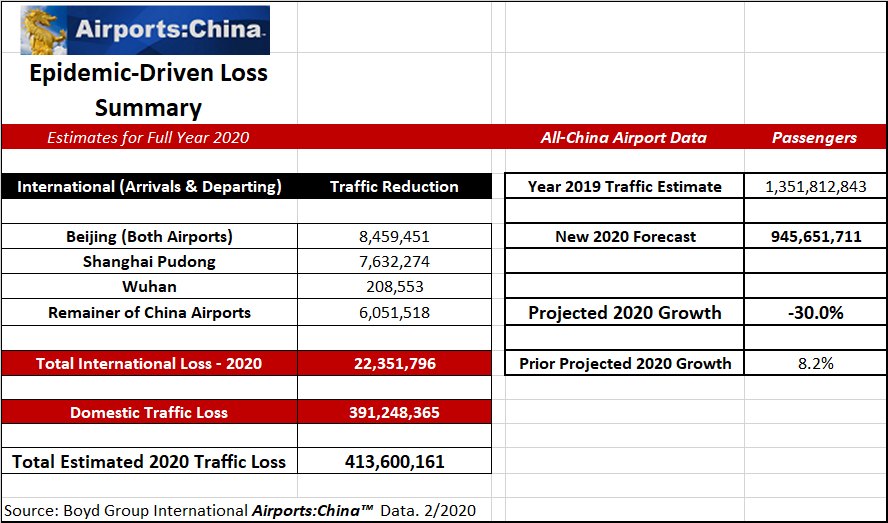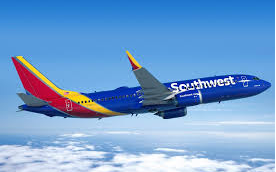Briefly –
What To Expect This Week & Beyond
A Bit of Context, First
To Start… Numbers found in media and CDC sources:
The US population is 330,400,000.
As of today, it is estimated that @7,500 people in the USA are known to be infected. Figure the actual number may be a multiple of that – maybe ten times – as it is reported that most cases are not severe.
Deaths in the USA reported as of 3/16/20 are at 69
Putting this in context, 40 of these are in just one state – Washington – and a major percentage of those occurred in one elderly-person nursing home.
Doing the math – not to minimize the danger of the virus – gives a very different perspective from the news videos of panicked people fighting over a box of Charmin at the supermarket.
Global – Not Local – Air Service Reductions
It’s not just the USA, the China virus is causing airlines across the globe to literally shut down partially or entirely.
The reason is simple – the demand is not there. Some of the reporting in the media is quite shoddy, implying that it’s all just a matter of government decision-making. It’s due to people staying home. Here and across the world.
Almost 33% of all US enplanements are driven directly and indirectly by international traffic flows, which are now essentially gone. The economic damage across the globe would indicate a very slow recovery of this sector.
A Skeleton System Is Possible
Remember, the five major network-based carriers – AA, DL, UA, WN and AS – are based on revenue systems, not individual “routes.” This means that reduced capacity at one airport or at a connecting hubsite will affect more than just the nonstop market itself.
What needs to be kept in mind is that air service at the vast majority of small to mid-size communities depends on the aggregation of traffic at these carriers’ connecting hubs. (Yes, and in many cases, that includes WN.) Reduced flights and capacity at the carriers’ connecting hubs will affect these airports first… constricting traffic flows from smaller feed markets.
Regionalization is likely – within regions, watch for consolidation of an airline’s service into fewer airports.
Hotel & Resort Closures – Flights Notwithstanding, No Place To Stay
We are seeing entire resorts in Las Vegas lock the doors, in some cases until May. That may spread across the country to entire sections of the hospitality industry. This means that discretionary travel will drop for the next six weeks. Airports with significant percentages of ULCC traffic need to take a hard look at reduced revenue streams.
Restructured Airline Fleets
Airline margins are thin. If this crisis situation continues for an extended period, it is not out of the question that a complete re-structuring of the air transportation system could be in the cards.
As one example, a lot of 50-seat jets have been living on the wave of a strong economy and very strong demand. Even with lower costs of jet-A, the rebound may leave a lot of these airplanes in the desert.
Point: a number of hub-feed markets might not be back.
BGI Clients Standby For Updates…
Boyd Group International will be monitoring events and will be in contact with our clients throughout the week as events unfold
____________________________________
BGI Stands Ready…-
Forecasts & Contingency Planning –
Effects of COVID-19 On Your Air Service
U.S. carriers are now making capacity cuts and fleet shifts in order to deal with the COVID-19 epidemic. International traffic was first.
Now, domestic restrictions are coming – big time.
The rapid decline in domestic bookings has route planners dissecting the financial status of every route and market.
The question is, do you and your board and community have a clear picture of what to expect? There’s a lot of blind speculation.
You need hard facts and unvarnished forecast projections, not guesses or wandering media suppostion.
Boyd Group International can help with a professional COVID-19 forecast analysis.
As the leading forecast firm in aviation, which entails ongoing and in-depth research on airline strategies and fleet trends, we have the data, expertise and industry knowledge ready now to provide  you with a comprehensive COVID-19 Traffic & Trend Forecast, based on known and potential scenarios that are specific to your incumbents and the projected timelines of this epidemic.
you with a comprehensive COVID-19 Traffic & Trend Forecast, based on known and potential scenarios that are specific to your incumbents and the projected timelines of this epidemic.
We would strongly recommend that the effects on your air service access be fully researched and understood. Take control of the information stream with hard, factual data and projections.
• Every airport has different vulnerabilities and strengths. The traffic shifts and capacity changes caused by the spread of this disease will be driven by a range of factors that are specific to the unique traffic base at each airport.
• For example, your local passenger mix is a critical factor. Leisure traffic – and particularly highly-discretionary leisure traffic – will be affected differently than business travel. In many cases, corporations large and small are slashing air travel, while there are at least anecdotal indicators that some leisure sectors are not as heavily affected.
• The effects on propensity to fly will be different from airport to airport. One thing we are assured of is that there will be airline capacity changes. Fleets will be shifted. Some markets capacity-reduced, others even cut completely. Airlines are losing money, and they will take drastic actions should this epidemic continue to spread. Also, even after it is over, some of the changes made could be more than temporary.
• Each Airline has different fleet and market strategies. American is parking most of its wide-body airliners for the next six weeks. Delta is pulling down a reported 300 airliners. The very different passenger stratas on ULCCs will also result in different reactions to the crisis. The point is to determine where they find highest and best use of the remaining fleet.
Get A Professional Forecast – Now. The Boyd Group International team will literally dissect your current air service situation, in light of the expected and possible capacity and route determinations by each of your incumbents.
The BGI Forecast Deliverables:
• Step One: Destinational Review & Consumer Segments. The current O&D patterns and revenue-generation at your airport will largely determine what changes incumbents may pursue. We will analyze your top markets, including load factors, revenue factors, hub-feed delivery, capacity, current fleet, and other dynamics.
• Step Two: Vulnerabilities of Current Air Service In The New Environment. The forecast will review the key aspects of your current service in regard to strength and weaknesses within the marketing and hub-feed strategies of each incumbent carrier, in response to the effects of the epidemic. Remember, airlines are revising their entire route systems – what’s done at other airports can and will affect yours.
• Step Three: Forecast Scenarios – High, Baseline and Low. Boyd Group International will prepare a 12-month forecast, based on several scenarios, including capacity changes, fleet substitutions, length and severity of the epidemic. Included are key vulnerability areas specific to your airport.
• Step Four: Recommendations & Planning. The Forecast will include professional recommendations regarding outreach and liaison with incumbents, as well as outreach to the community and stakeholders. The data and the message need to be clear and understandable to all stakeholders
Time Is of The Essence. Boyd Group International understands the rapidly-evolving nature of this crisis. Because forecasting is our business, and because we’ve built extensive traffic and forecast databases, we can deliver your data quickly.
We’ll Be There As Events Evolve. In addition, this is completely new territory, so count us on-board for the following 60 days to keep you updated with recommendations and insight as events may dictate.
Give us a call, or click here to email now to get started. There are some tough times ahead, and the more you understand, the easier it will be to bring your community on board.
THE BOYD GROUP INTERNATIONAL TEAM









